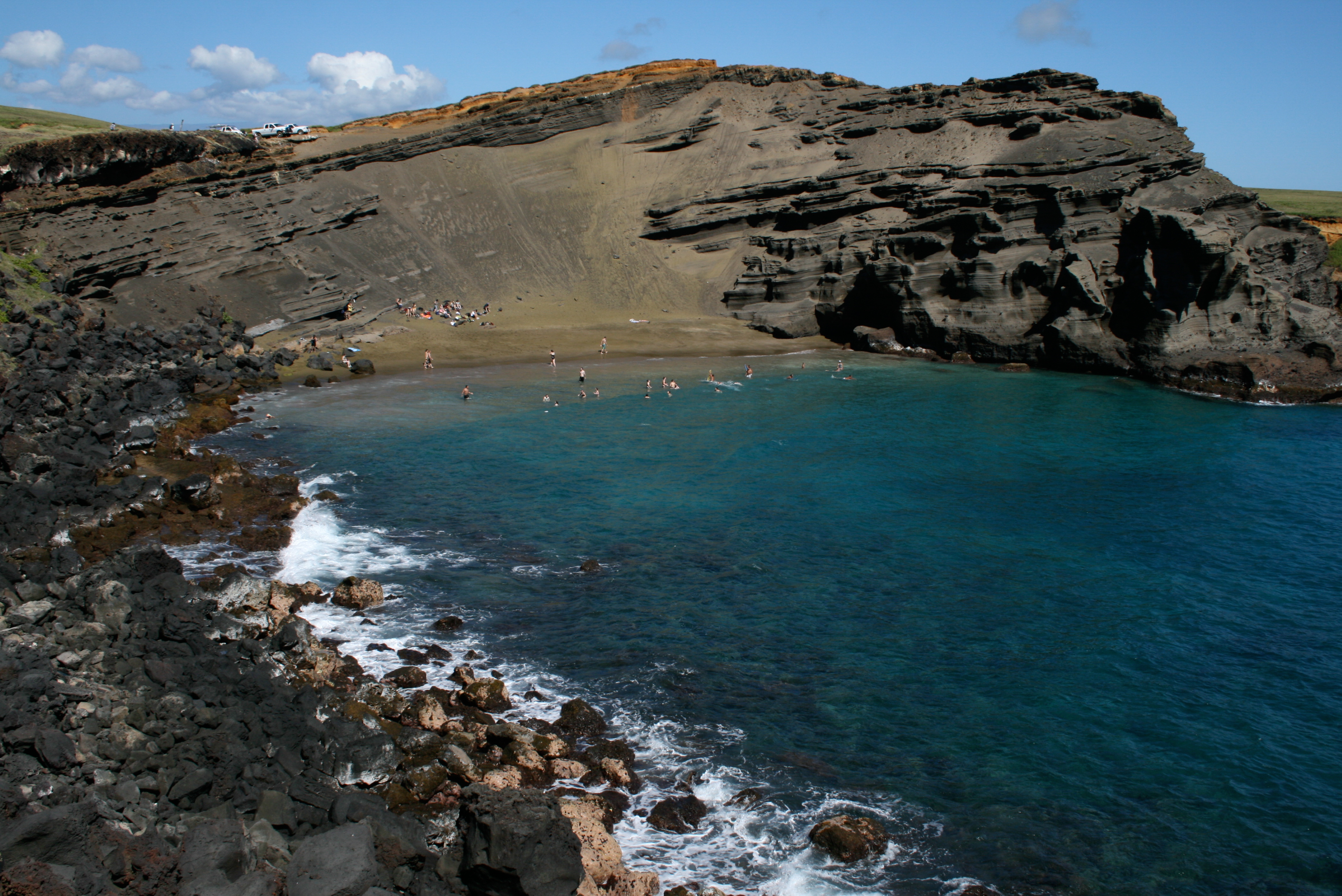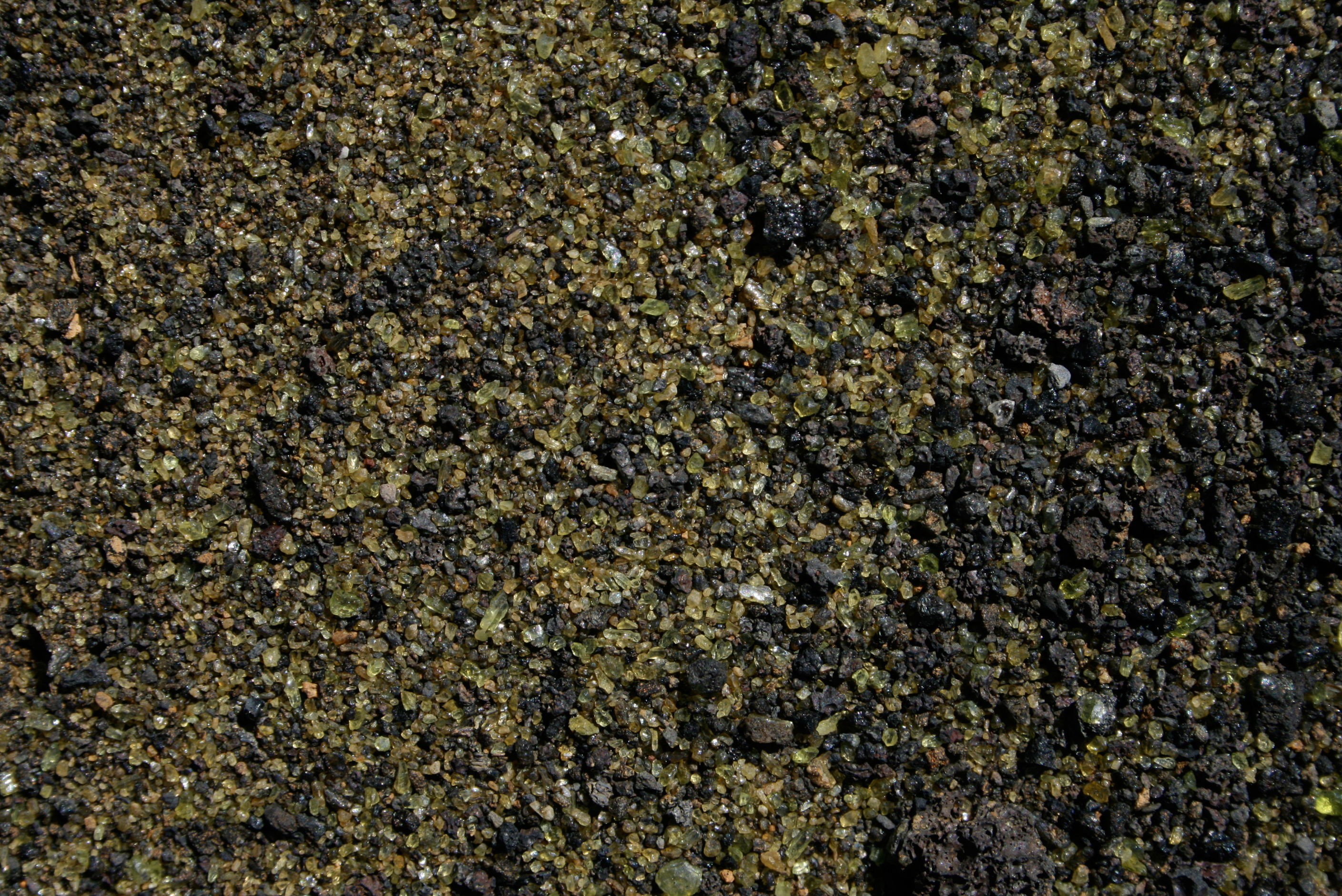Mauna Loa is a hot-spot volcano on the "Big Island" of Hawaii. Many of its lava flows have olivine phenocrysts. The photos above show a beach of green sand, rich in olivine, produced by the weathering of a littoral cone that was built when the a prehistoric Mauna Loa flow reached the ocean. The presence of olivine in the Mauna Loa lavas makes olivine a good candidate for a fractionatine phase.
Chemical compositions for a large dataset of Mauna Loa lava flows are shown on an MgO-SiO2 variation diagram in Figure 8.08. These data, reported by Mike Rhodes (2015),
Figure 8.08. MgO-SiO2 Variation diagram of Mauna Loa lavas. Click on the diagram to view a larger, interactive version.
Click on Figure 8.08 to see a larger version with radio button options to display the DiFoAn laboratory-constrained removal of olivine as observed in Figure 8.05. The linear trend for the Mauna Loa data does not point to forsterite, but the trend is consistent with removal of olivine with a composition near Fo(80). Figure 8.08 also has radio buttons to view CaO-SiO2 and Al2O3-SiO2 variation diagrams that support the interpretation that fractional crystallization of olivine with a composition near Fo(80) produced the observer linear trends in the data.
Because olivine is a solid solution mineral, olivines that grow at different temperatures might have different compositions. Different olivine compositions might be responsible for some of the scatter in the Mauna Loa data and might lead to a curved line on a variation diagram. The effects of olivine compositional variations can be removed by switching to mole units and choosing axes so that ALL Fe/Mg olivine compositions plot at the same point. Look again at Figure 8.08 and choose the
"(MgO+FeO)-SiO2-Others" radio button. On that diagram, the Mauna Loa data and the DiFoAn data are along lines that radiate from the ALL Olivine Compositions point.

